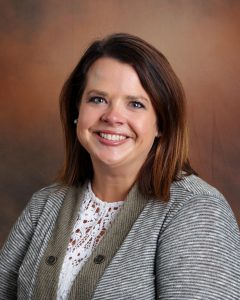Unlabeled is a three-part blog series that focuses on removing the stigma associated with people that are contemplating suicide and discusses the impact of human connection.
“You kids these days have it so easy. When I was a kid, we had to walk five miles to school barefoot, uphill both ways, in a blizzard!”
Who hasn’t heard those words, or at least words to that effect, when it comes to the “older” generation – comparing their early life to the early lives of the generations that followed them?
In many respects, our elders did, in fact, have it tougher as young people than we did, and our kids do. They deserve a tip of the cap for the hard times they endured and the hardscrabble existence their families sometimes had to carve out.
But as children and teens and young adults, even they’d admit they never had to lead a double life. They never had to maintain two mostly separate existences, essentially every hour of every day.
Like today’s young people do.
Today’s youth live and maintain their in-person lives while also living and maintaining digital lives via social media.
They’re rarely, if ever, without a portable digital device, and, therefore, their digital lives are always with them, often literally attached to their hip.
Ask young people today how stressful and overwhelming it can be to live these two lives constantly, and they might tell you that trudging uphill through the snow barefoot doesn’t sound so bad. And the snow eventually melts and gives way to green grass and warmer temperatures. But the crushing anxiety and despair? It can linger, it can spike, and it can mount to the point that young people don’t see any way out – or any way through. No matter how much adults tell the kids that things will get better or that someday they’ll look back at their current stresses and wonder why they got so worked up (or maybe even have a good laugh) – it’s often not enough to convince today’s youth that there is light at the end of their long, dark tunnel.
It can all be too much and lead young people to wonder if harming themselves is the only escape.
“Youth have social media, much like adults, available 24/7. Not all youth can access social media with the discernment to filter information that is helpful or hurtful. Many adults don’t, either. It is human nature to compare ourselves to others, feel jealous, or feel like we are missing out, which can lead to anxiety and increased stress,” explains Tara Rodriguez, Licensed Independent Clinical Social Worker (LICSW) with Alluma. “As an adult with skills to discern what I am looking at, I can remind myself that the posts are highlight reels of life. For example, I post pictures of my wedding, buying a house, and my puppy, but I skip sharing pictures or information of my husband’s cancer or other struggles we have had. It is not as easy for youth to recognize that. Being left out is now on display.
“Homecoming photos posted show everyone dressing up and having a good time, but not for the student or their parents that didn’t have the same experience. When we were youth, we didn’t have the ‘in your face’ missing out on things. There is also no natural ‘pause button’ that may have existed in our youth. Something as simple as a disagreement with a friend can carry on through texting or messaging into the night,” Rodriguez continues. “In our day, you typically had from 4 p.m. to the following morning to think about the situation, calm or cool down; we are missing that now. It’s important that adults teach children to put boundaries on their technology, the hard part being that many of us adults aren’t always successfully doing that, either.”
Today’s youth see so many adults in their lives constantly scrolling and obsessing over their own social media lives. It only compounds their belief that what happens on social media is of utmost importance. And if what is happening on social media is often negative and stress-inducing, in the form of cyber-bullying, it only makes our youth feel more distraught, desperate, and without hope that they can escape the digital abyss.
“Bullying and cyberbullying certainly happen and need to be taken seriously. By definition they are targeted, repeated, and usually have an imbalance of power – real or perceived,” Rodriguez says. “Technology makes detecting bullying and intervening sometimes difficult for an adult. If someone is punched that is clear to see, but if someone is excluded, given dirty looks, sent inappropriate messages, or had a rumor started about them on social media it can be more hidden.”
Again, young people often look to their parents and other adult role models and their behavior.
“It is equally as important to talk to youth and model how we treat others in general. If you look at the comments section of an online news article, a school board meeting, or a social media ‘rants and raves’ group, there are examples of adults talking to each other in aggressive ways all the time,” Rodriguez says. “I humbly ask parents and guardians to talk openly with their youth. I know it isn’t always easy to navigate, but ask what apps they use. Ask if they have ever had someone threaten them through technology or in person, and monitor what they have access to. Obviously, the monitoring of a 17-year-old will look different than a nine-year-old. Still, kids need boundaries, not just from an authoritative standpoint, but it protects them from themselves.
“I think of how impulsive I was 17-21 years of age, and am so thankful that I didn’t have access to the same things youth today do,” she continues. “I try to keep that in mind when talking to youth that have made mistakes or poor choices.”
Rodriguez talks to a lot of youth. Working for Alluma and based in Crookston Public Schools, she interfaces with them at some of their best moments, but more often than not, some of their worst.
“In the beginning, we were called ‘Family Service Specialists’ because not many were ready to talk about the mental health needs of youth. Through school administrators, teachers, and families who valued mental health, it’s evolved to a team of us serving youth,” she explains. “Now we can discuss mental health needs openly. We can use our specialized training to provide mental health evaluations, treatment plans, therapy, and skills-building services for youth.
“With so many challenges our youth face today, we’ve made great strides in de-stigmatizing mental health,” Rodriguez adds. “There is always room for growth, and we aren’t perfect, but we serve students from every different kind of socio-economic status, ethnicity, and family background.”
When the pandemic sent kids home to learn via distance learning, it increased the scope and impact of young people’s social media existence compared to their in-person existence. Feeling more isolated and alone than ever, Rodriguez says, more youth have needed services at the school district, county, and state level. But it’s not like everything was coming up roses for young people before the pandemic, she stresses. And, again, if adults are struggling and stressed – they certainly aren’t immune to the pandemic’s negative impacts – the youth in their lives aren’t blind to it.
“The pandemic was a perfect storm of some things already brewing. One of the impacts around children is how the adults in their lives are coping with stress. At no fault of their own, many parents are experiencing job stress, financial stress, and ongoing isolation from family and friends. They are missing out on those activities that bring a sense of belonging and happiness,” Rodriguez notes. “Life celebrations and other events happened without a coming together, whether that be a funeral, a wedding, or a birthday, and that can feel unsettled. Having your support system is important for overall health and wellbeing.”
If you are feeling distressed, anxious, or experiencing a mental health crisis, please call our 24/7 Support & Crisis Helpline at 1-800-282-5005.
 |
Tara Rodriguez, MSW, LICSW Tara oversees our School-linked Mental Health Program and spends most of her time at Highland Elementary in Crookston, MN. |

